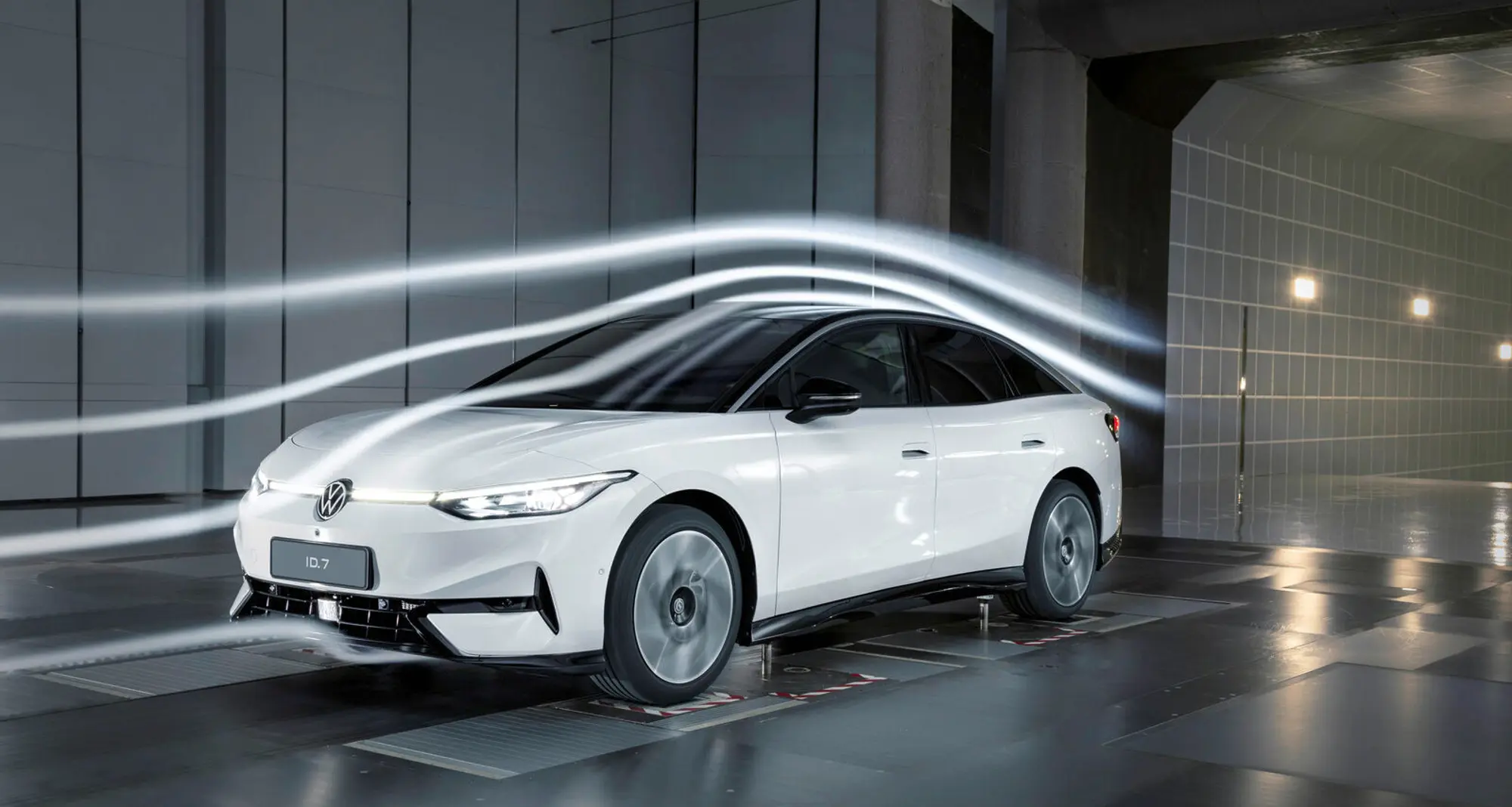In the case of limousines like the purely electric Volkswagen ID.7, the drag coefficient (cw) about 50 percent depends on the shape of the body. In addition, wheel rims and tires account for nearly 30 percent, and the design of the underbody accounts for 10 percent, while various functional openings, such as those that lead air to the radiators at the front of the vehicle, also determine 10 percent.wValue development.
The new ID.7 arrives as the most streamlined model yet, which can be felt at first glance in the car’s nearly five-meter-long silhouette. As Daniel Scharfschwerdt, Volkswagen designer, explained: “During its development, the ID.7 received an almost unparalleled aerodynamic design, which is clearly visible in its low nose, forming the continuous transition towards the hood and its fast-impact windshield. The coupe-like roof arch and the rear section that tapers back were also born with the spirit of Perfect aerodynamics.
Already at the initial stages of product development, exterior details were intensively improved, as were the shapes of the bottom of the car, wheels and other design elements. The condition for achieving the best results is close communication between technical developers and designers. Stephan Lansmann, ID.7 Aerodynamics Project Engineer highlighted: “We seek optimization through an iterative process, during which technical development and design converge again and again. There are many, many small steps that will eventually prove useful. In doing so, many computer flow simulations and wind tunnel tests complement each other.”
The bottom of the ID.7 is almost completely covered, and in addition, newly developed front wheel spoilers direct air under the vehicle and along the wheels with minimal spin. The front bumper’s outer air ducts (air curtain) help air flow more efficiently around the front of the vehicle, and widened side skirts and rear wheel shading prevent air from flowing over it. they. At the bottom of the car, small air deflectors and various covering elements control airflow.
“In electric vehicles, wheels can contribute more to favorable aerodynamic characteristics, so they also received special attention in the case of the ID.7.” Lansman confirmed. – “While designing the rims, the primary focus was on aerodynamics, which we also had to coordinate with proper brake cooling.” explained the specialist. “The result is a wheel rim with a more closed shape and therefore particularly favorable aerodynamics.” Flow simulation was also used when designing the tire profiles, so versions with weaker aerodynamic characteristics could be improved already at the concept stage.
In addition to all this, other parts of the car were taken into account during the entire aerodynamic development process. These include, for example, the front post vents through which air enters the radiators at the front of the vehicle. In the case of the ID.7, in order to further reduce air resistance, the radiator shutter actively regulates the air flows. The electrically powered curtain opens only when the power and battery components require targeted cooling. At the rear of the car, the perfectly shaped tailgate, diffuser design and side spoilers ensure more efficient aerodynamic characteristics.
The focus is initially on computer simulations. During the first year of development, it only works by default, and is updated about every two weeks. Lansman reported. The design team collects CAD (Computer Aided Design) data, from which thousands of processors calculate airflow values, including for details like the ID.7’s recessed door handles or the aerodynamically shaped housings for the exterior mirrors. “We only go into the wind tunnel when we have already fixed the coordination plan, which can take up to a year and a half from the start of development.” – added the specialist.
The Volkswagen team used life-size clay models of the ID.7 in a wind tunnel. The improvements here have been made with millimeter precision on the surface of the model using a milling machine, for example when creating tail section shapes or air deflection edges that improve separation of flows. Stefan Lansmann’s team used prototype 3D-printed parts to test several different versions, such as the exterior mirror housings. In the case of the ID.7, the base of the mirror caps, as well as the upper and lower casing lines, are finally designed in this way, in the spirit of moderate air resistance and outstanding acoustic properties. The result of detailed work 0.23 cwvalue, which is the best drag coefficient of the entire Volkswagen ID family.












































